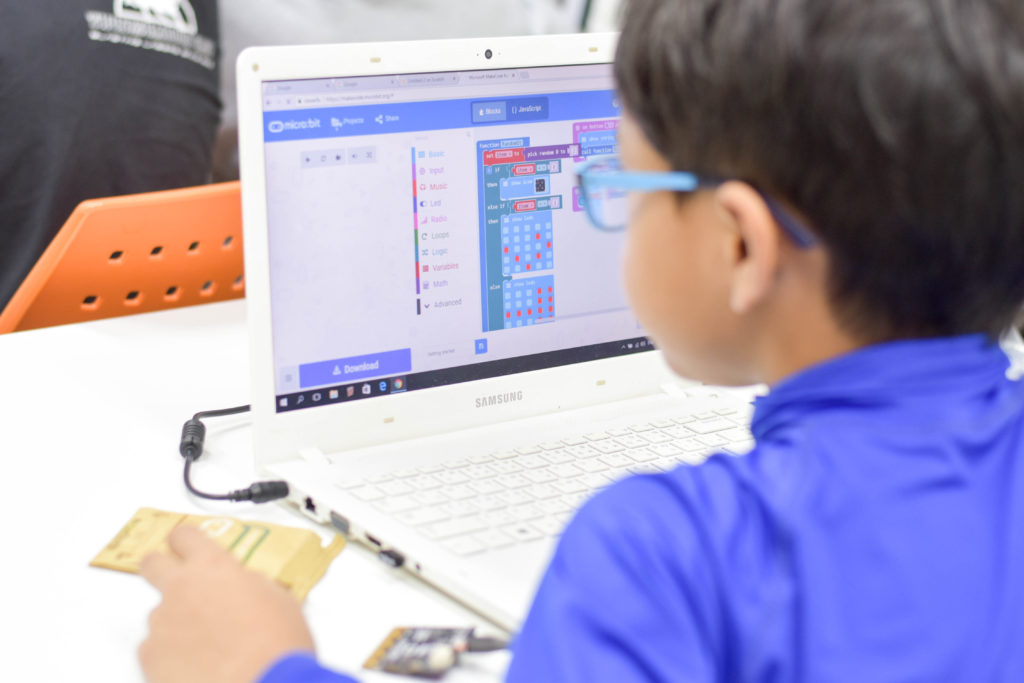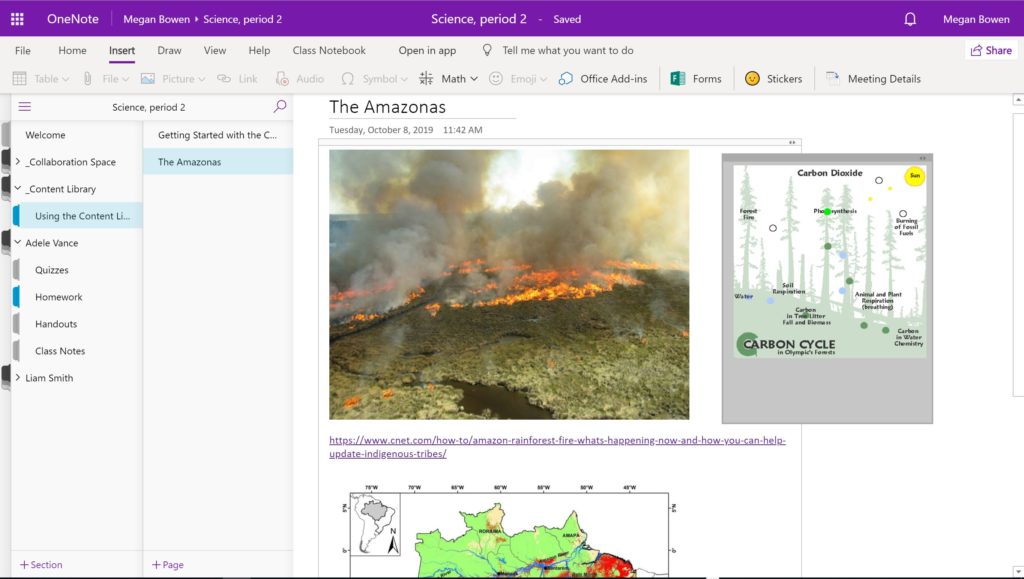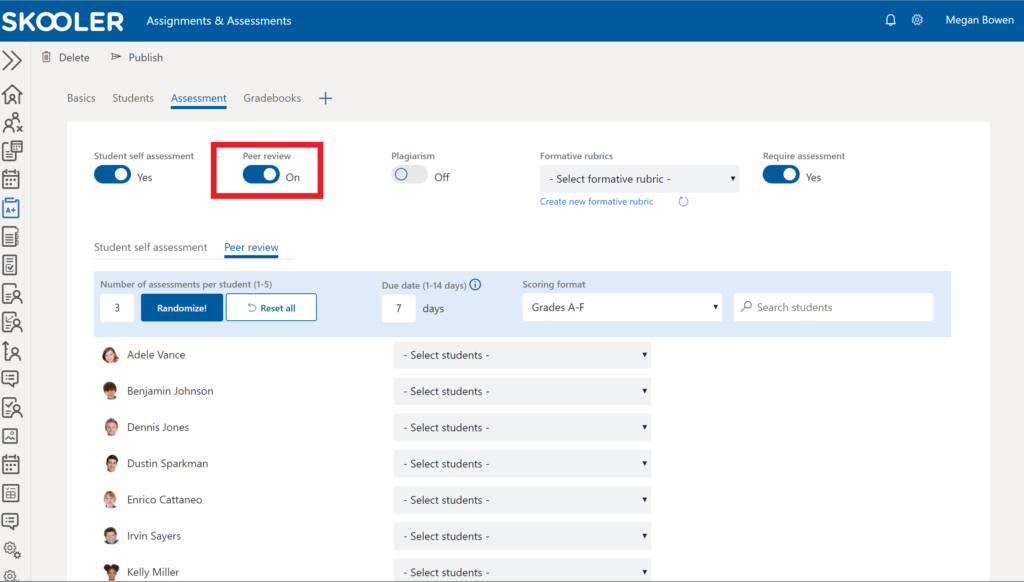It’s clear that young people are very passionate about saving the planet. The rising awareness of issues related to climate change and the environment has inspired students all over the world to get involved, learn about climate and the environment and take action – from classroom projects to speaking on the world stage.
As we grapple with these complex, global problems in the classroom, three things are becoming very clear:
- It’s an interconnected world. To better understand complex problems, we need to think – and teach – in terms of entire systems and how they interrelate.
- STEM is not enough. We need science, technology, engineering and math and we need more collaborative approaches to problem-solving.
- Everyone has something to contribute. This challenge presents a tremendous opportunity to bring more students into the STEM+ fold.
Now is the time to engage the interest and passion of young people around these issues. And it’s also time for STEM education to kick up a notch – to look not only at individual subjects, but also to tap into the naturally collaborative nature of children, help them think in a more systems-oriented way and learn how to work together across multiple disciplines in order to solve complex problems.

Collaboration is the Gateway to STEM
By teaching collaboration – and using collaborative tools – we can bring every child into the problem-solving fold.
Some students are naturally drawn to STEM. Others may have a natural aptitude for science or math, but they’ve never found a topic that piques their interest enough to pursue it. And some students may not think STEM is for them because they feel more aligned with the humanities, communications, political science or geography – all subjects that, while not always associated directly with traditional science and math, involve problem-solving in different and often creative ways.
If we want to attract the best and brightest minds into the fields that will move us forward and solve global issues, we must look to ALL of the population. In education, when we shift the focus from STEM as subject matter toward a more problem-solving and systems-thinking orientation, collaboration is what allows us to bring a much broader group of students, with fresh ideas and approaches, to the STEM table.
This requires that we rethink how we teach and evaluate STEM.
“They key thing to understand about evaluation is that STEM work is accomplished through the collective,” said Calvin Mackie, founder of the non-profit organization STEM NOLA, in his Forbes article How to Develop a High Functioning STEM Community. STEM is not about individual talent, it’s about the team. That’s why collaboration is so important (both in this context and the in a professional environment).”
Fostering Collaboration in STEM
Tapping into young people’s passion for saving the planet creates a great opportunity make STEM and related subjects very real and personal. And it infuses STEM with a sense of purpose that helps students stay engaged.
PERSON, Senior Vice President, Technology at a major bank, says she always tries to frame technology as a combination of purpose and problem-solving, particularly when she talks with girls – an under-represented group in STEM.
“When I talk with girls, I first ask what big problems they would like to solve,” she said. “I then share how technology can provide them the tools to do so and how important their insights are. It’s a great place to start: spark curiosity for problem solving and a passion for missions, then foster a love of technology as a path to achieving their goals.”
Helping students frame STEM subjects around, passion, purpose and problem-solving helps students stay engaged. Here are a few ways to support this in the classroom:
Project-based learning. Project-based learning can make science-related issues fun for any age. When talking about environmental issues, bring it outside. Studying things in their element – such as how to help preserve bee populations or learning about weather patterns and probabilities by identifying cloud formations – provides a sense of purpose and tangibility around STEM that’s hard to achieve in a classroom lecture.
Multi-subject discussion groups. Students of any age love to engage in group learning. A collaborative group problem-solving discussion could revolve around age-appropriate geopolitical or social issues that require science and math for problem-solving. Bringing different voices to the table helps STEM-oriented students see the broad application for their interests and helps humanities-oriented students see how very tangible and important STEM learning is to their future.
Gamification for STEM. Tapping into the power of gamification in learning can help teachers motivate students who may not yet be convinced that STEM is for them. It has the power to increase collaboration and leverage the power of storytelling to help improve the learning process.
Collaborative learning tools. There are a number of software tools that can help make STEM learning more comprehensive and collaborative. One of the most versatile tools is OneNote.

• Digital whiteboard. For teachers who want to integrate STEM across multiple disciplines, OneNote’s digital whiteboard is the perfect tool. It allows teachers to integrate multi-media assets into their lessons – including videos from YouTube, web pages, published scientific data and still images – creating a “show vs. tell” approach that’s both educational and engaging. OneNote also allows teachers and students to present their material in a sequence. For example, writing out a math equation and gradually revealing steps and answers as they walk through them.
• Collaborative notebooks. Because it lives in the cloud, work is saved automatically and multiple students or teachers can collaborate on a single OneNote notebook, using different sections and tabs to save research, links, images, videos and documents, making it a great tool for project-based learning.
• A tool for all styles. Because it works like a plain canvas with the ability to type in text boxes or draw with a stylus/pen, students who prefer to take notes in a more visual, non-linear way can use it to diagram their thoughts, create processes, annotate images and bring forward creative approaches to problem-solving. This also makes it a perfect tool to capture the results of collaborative brainstorming with audio and video as well as notes that are shared among the group.
Supporting collaboration among teachers. A cross-disciplinary approach to teaching also requires that subject teachers collaborate. Using Microsoft Teams in Skooler provides teachers with a chat and online meetings solution that supports collaboration and simplifies file-sharing. It’s integrated with Office 365 apps including Word, Excel, PowerPoint, OneNote, and Sharepoint. When a file is shared to a Team, it is automatically shared with all colleagues in the team.
Thinking Differently About Assessment and Evaluation
“We have a whole culture of giving and taking tests, but teachers would benefit from thinking beyond that and delving into project-based learning or portfolio-based assessment,” said Calvin Mackie of STEM NOLA.
According to Mackie, STEM education is about doing, not knowing. “A scientist can tell you what is and what is not, engineers create that which never existed before, based on that same science. So it’s basically impossible for a standardized test to evaluate whether someone would be a great STEM person. And that’s the rub. That’s why you have so many kids flunking school but becoming great coders. To better read your students, it can’t be one-size fits all.”
The Skooler Learning Management System supports teachers and school systems with a range of tools that help teachers create more individualized learning plans and aid in different types of assessments.
Peer review. Skooler’s Peer Review functionality, which will be available in October, supports collaborative learning by allowing students to seek and receive feedback on their work from classmates. This not only helps students learn from each other, it also allows teachers to oversee how students are reacting to each other’s work on group projects so they can better support students in teamwide, collaborative discussions.

Formative assessment. Formative assessments allow teachers to help students along the way during the learning process. Tools included with Skooler and Office 365 support formative assessment in myriad ways. Microsoft Word, Excel, OneNote, PowerPoint and Teams provide the ability to insert contextual comments right into the document or workspace, enabling teachers and students to interact throughout the development of a single or group assignment.
Standards-based assessment. Many schools are moving toward standards-based assessment. Skooler’s Learning Management System is designed to support how teachers keep track of assignments and grades and supports standards-based learning. Teachers can outline learning goals and specific areas of focus which students and parents can easily access.
Engaging parents in collaboration. With messaging, chat, calendar, assignment and assessment features (among others), Skooler’s Dashboard allows teachers, students and parents to engage, share information and support the student’s learning journey.
Skooler empowers teachers to implement real-world, project-based lessons into their classrooms, facilitate collaboration and engage in a style of teaching and evaluation that will help students build the 21st century skills they’ll need for lifelong success.
